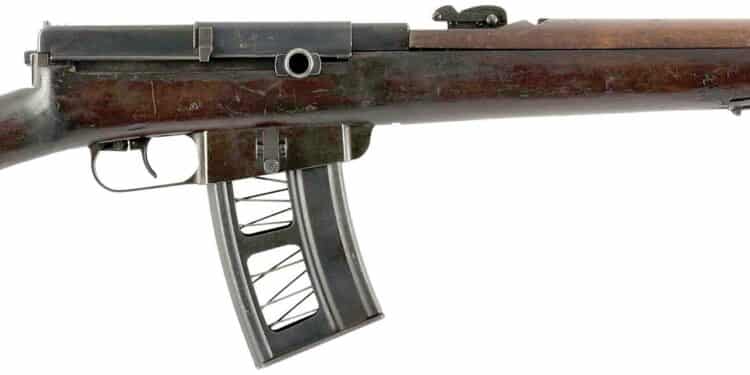By Michael Heidler
During World War I, little had happened in Italy in terms of semiautomatic rifles. The country was too busy with the burden of the War. It was only after the War that some developments slowly took shape and the Italian military became interested in semiautomatic weapons.

Left side of the Breda PG.
In the years before World War II, the well-known armaments manufacturer Società Italiana Ernesto Breda per Costruzioni Meccaniche (SIEB) in Brescia worked on an automatic rifle. At that time, the Italian Armed Forces already had the light machine gun Model 30, machine cannons and larger guns from Breda in use. Breda’s chief designer Sestilio Fiorini designed the Moschetto Automatico Breda Modello PG (Presa Gas), a gas-operated weapon in 6.5x52mm that fires from the closed bolt.
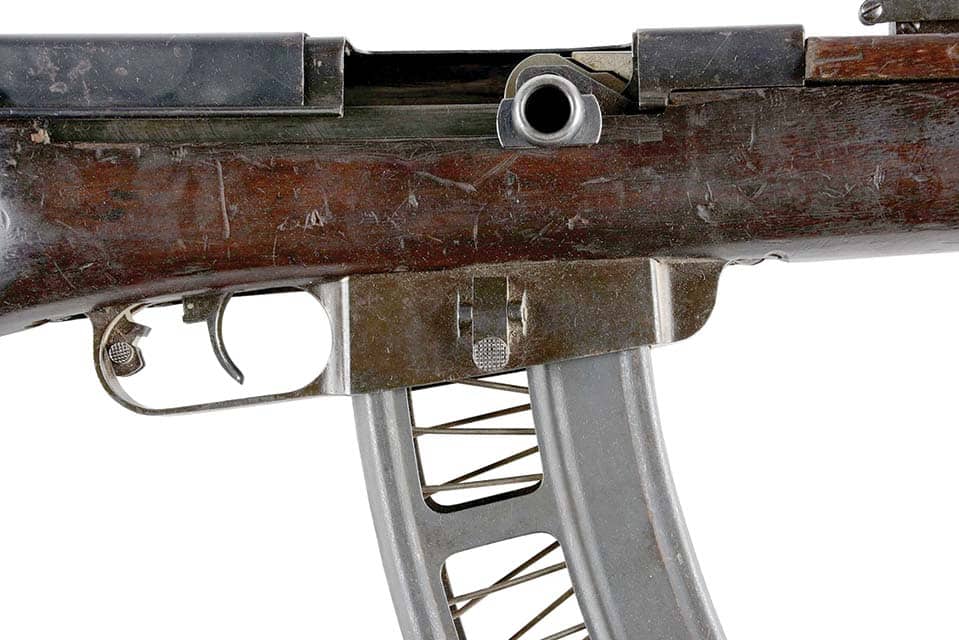
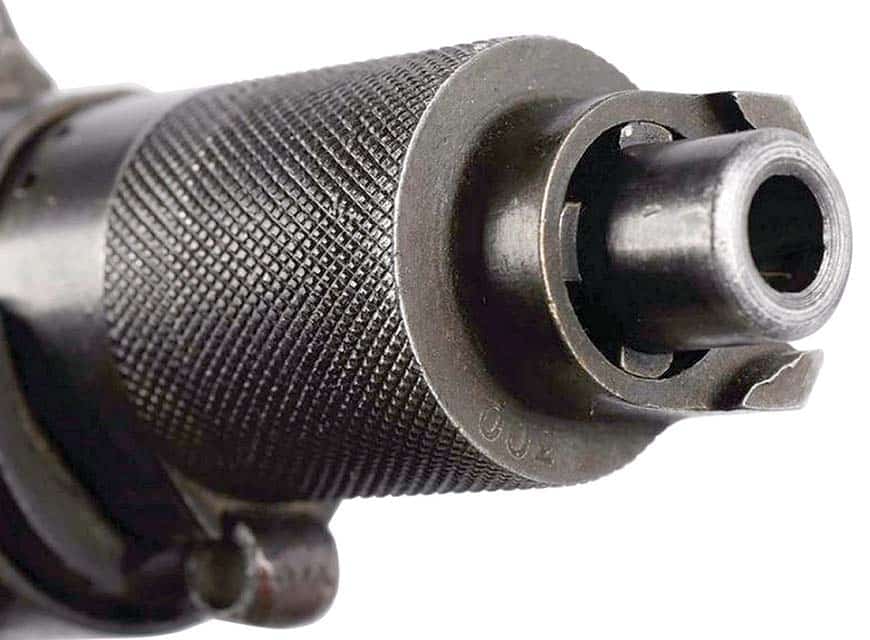
Overall, the weapon is fairly complex, expensive to manufacture and tricky to clean and repair under field conditions. Via some holes in the barrel near the muzzle, the gas pressure acts on a movable tube that is slipped over the barrel. At its rear end, the tube merges into a push rod. Another tube around this assembly acts as protection and also carries the front sight. The recoil spring is accessible via a hinged lid on the underside of the forestock. The two-piece bolt has only one central locking lug located on its top. On its way toward the chamber, the bolt head is raised by lateral guide rails inside the receiver, and when the front position is reached, the lug locks in a corresponding recess. The ammunition is fed from attachable magazines with a capacity of 20, 30 and 50 rounds. The magazine lips only extend over a quarter of the magazine length. The other part of the lips is permanently integrated in the receiver at the bottom of the magazine well. The idea was to reduce feeding problems caused by bent magazine lips. The release button is located on the right side of the magazine well.
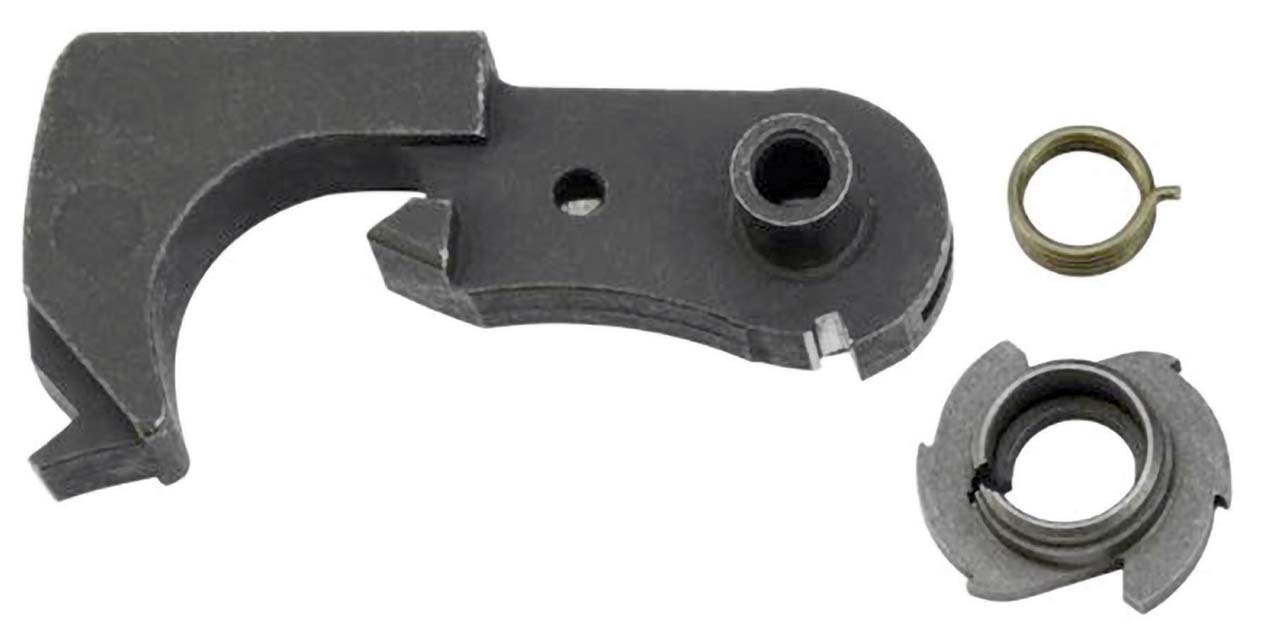
Enter Costa Rica
The Italian Army did not acquire a liking for the weapon during testing. Breda then offered it on the international market and finally won Costa Rica as a customer in 1935. However, to fulfil Costa Rica’s wishes, some design changes were necessary. The weapon had to be chambered for the 7x57mm Mauser cartridge, which is widely used in Latin America, and a complex fire selector was desired. In addition to the single-shot and semiautomatic modes, the weapon should be able to fire four-round bursts instead of unlimited fully automatic fire. Breda changed the way the weapon worked, and now it fired from the open bolt. Of course, this is not ideal for use under adverse conditions, since dirt can easily get into the system. The Breda PG has a solid milled dust cover, but it only protects the bolt in its forward, uncocked position. When cocking the bolt, the dust cover is pushed back and snaps into place at the rear end of the receiver. It does not reciprocate with the moving bolt during firing, and the soldier had to carry his cocked weapon with an open bolt through the jungle of Costa Rica.

The dust cover stays in its rear position and does not reciprocate with the moving bolt during firing.

The rear end of the receiver is closed by a buffer with a strong spring. It can be unlocked and pulled out for disassembly.
Burst Control Construction
The mechanism of the burst control is an interesting construction. A rotatable gearwheel is located above the trigger. When the bolt slides back, it pushes down a spring-loaded rod projecting into the way of the bolt, which in turn hits a tooth of the gearwheel. The wheel turns by one position, and the rod moves up again. This process is repeated as long as the trigger remains depressed or four rounds are fired. Then the trigger sear snaps up and catches the bolt. The mechanism works very reliably. However, there is one disadvantage: the gearwheel does not start counting from zero. If the shooter releases the trigger after less than four shots fired, the weapon will only fire the remaining number of shots at the next burst. Only then does a new count to four begin again. That means that the first burst is always a surprise for the shooter, because he does not know the position of the gearwheel. The fire selection lever is placed directly behind the trigger and affects its mobility. Depending on the position of the lever, the trigger can be pulled all the way through (burst), just a little (single-shot) or not at all (safe). The Costa Rican government was satisfied and ordered 400 pieces. The standard bayonet of the local rifles also fit the adapted bayonet lug.
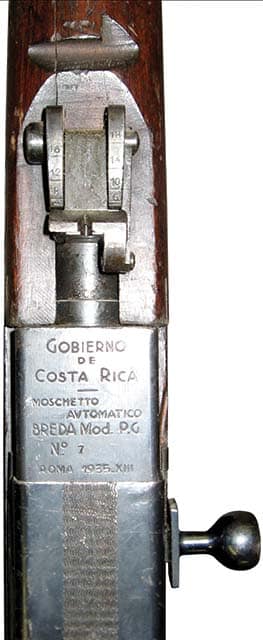
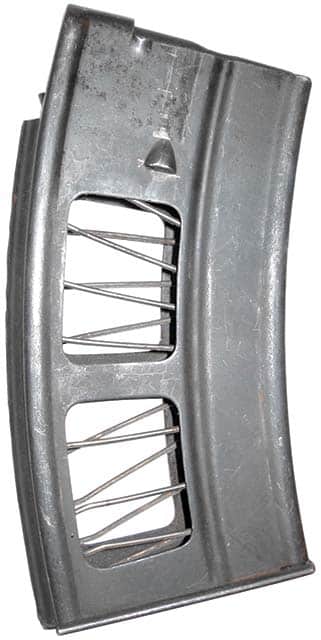
It was easy for the soldier to check the number of rounds left, but the magazines were totally unsuitable in dirty conditions
Fascist Era Markings
The weapon discussed in this article with serial number 300 bears the Costa Rican inventory number 7 and comes from the collection of the late cartridge expert William H. Woodin. Interestingly enough, the year of manufacture, “1935,” is stamped on the receiver in two different calendar eras. With the seizure of power by the Fascists in 1922, the new rulers introduced a new era: the first day of the first year of the Era Fascista was marked by the swearing-in of Benito Mussolini as Prime Minister on October 29, 1922. The “XIII” is therefore a Roman 13 and thus also stands for 1935.

This hinged lid covers the recoil spring. Note the guide rod inside the spring.
This particular weapon was used at Aberdeen Proving Ground at the end of the 1970s when the burst-control device for the A2 version of the M16 assault rifle was developed. The reason for this development was the waste of ammunition and a poor performance of most soldiers firing their rifles in fully automatic mode. As with the Breda PG, the M16A2 features a gearwheel, stops firing after three rounds, and the number of shots on the first burst is a surprise.
• • •
The author thanks Morphy Auctions/James D. Julia Auctioneers and Ian McCollum (forgottenweapons.com) for their information and photos.
| This article first appeared in Small Arms Review V24N6 (June/July 2020) |



